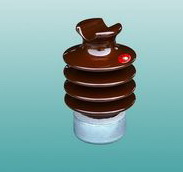5 Critical Factors When Selecting Porcelain Insulators for Distribution Line Reliability

Porcelain insulators remain the backbone of reliable power distribution networks worldwide. According to IEEE failure statistics, insulator-related issues contribute to 23% of unplanned outages in medium-voltage grids. With rising climate challenges and grid modernization demands, proper porcelain insulators now selection is critical for ensuring transmission line reliability and operational safety. Here are five non-negotiable factors:
1. Electrical Performance Under Extreme Conditions
Distribution lines face lightning surges, pollution flashovers, and switching overvoltages. Prioritize insulators with:
- Impulse Withstand Voltage (BIL) exceeding local grid requirements (e.g., ≥150 kV for 33kV lines)
- Creepage distance calibrated to pollution severity (IEC 60815 Class III/IV for coastal/industrial zones)
- Verified power-frequency wet withstand voltage test reports
*Example: A Brazilian utility reduced flashovers by 68% after switching to 420mm creepage porcelain insulators in salt-contaminated zones.*
2. Mechanical Load Capacity
Wind, ice accumulation, and conductor tension demand rigorous mechanical validation:
- Specified Mechanical Load (SML) must exceed maximum design load by 2.5x (per ANSI C29.1)
- Cantilever strength ≥12 kN for typical 11-33kV distribution lines
- Third-party certified shatter tests (critical for earthquake-prone regions)
3. Environmental Durability
Porcelain’s vulnerability to environmental stressors requires proactive engineering:
- Cement expansion control: Alkali-resistant cement prevents “growth cracking” in freeze-thaw cycles
- Glaze quality: ≥1mm thickness with barium-based formulations for UV/acid rain resistance
- Internal cavity design: Pressure-equalized units prevent explosive fractures during faults
4. Standard Compliance & Certification
Regulatory misalignment causes costly retrofits. Mandatory certifications include:
- IEC 60383 (international) / ANSI C29.1 (North America)
- KEMA or IPH type tests for seismic/anti-pollution performance
- ISO 9001 manufacturing audits (critical for batch consistency)
5. Lifecycle Cost Analysis
Low upfront cost ≠ value. Evaluate:
- Maintenance frequency: High-quality porcelain requires 40% fewer cleaning cycles than standard units
- Failure replacement costs: Premium insulators show <0.2% annual failure rates vs. 1.8% economy-grade
- End-of-life recycling: Zinc-galvanized fittings recover 95% metal value
Proven ROI: A Thai grid operator achieved 22-year service life from premium porcelain insulators—exceeding typical 15-year lifespans—by prioritizing factors 1-4.
Why Selection Methodology Matters
In 2023, a North American utility attributed 17% of SAIDI minutes to insulator failures—mostly traced to inadequate pollution class matching and substandard mechanical tests. Proper porcelain insulatorsnow selection directly impacts:
- System availability (↑ 5-8% MTBF)
- Safety compliance (OSHA/NFPA 70E)
- Storm resilience (↓ 70% ice-related failures)
Action Step: Please visit our official website to check the specification of our Porcelain Insulators (includes IEC/ANSI cross-reference tables and TCO calculator) to validate your next procurement.
We are a large manufacturer group in China, focusing on electric equipments production and maintain. We can provide you the complete products or provide you all spare parts and accessories.
Our main products including surge arrester, porcelain insulator,fuse cutout,transformer and hardwares. We offer good quality one-stop solution of the Installation and maintenance of power transmission and transformation equipment. You can keep our officail website,www.asiapower.net, and whatsapp: 0086 13786188769, Email: hello@asiapower.net
